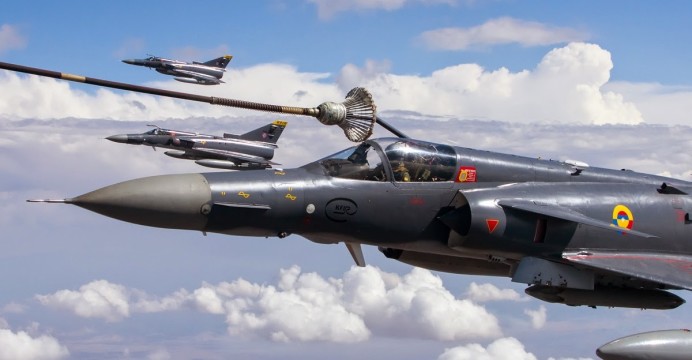Satellite calls too ‘weak’ to detect missing Argentine submarine with 44 crew members
A search has turned up no sign of the submarine on the ocean’s surface, but the crew should have ample supplies of food and oxygen.
A storm on Sunday complicated efforts to find an
in the South Atlantic with 44 crew members, while satellite calls thought to come from the vessel did not help searchers identify the vessel’s location.
The defence ministry has said the ARA San Juan appeared to try to make contact through
on Saturday between late morning and early afternoon. The vessel was 432km (268 miles) off Argentina’s coast when its location was last known early on Wednesday.
As waves of up to 8 metres and winds reaching 40 knots complicated the search by sea, authorities spent Sunday trying to trace the submarine’s location through data from the satellite calls without significant progress, a navy official told reporters.
“We analysed these signals, which as we know were intermittent and weak,” said Gabriel Galeazzi, a naval commander. “They could not help determine a point on the map to help the search.”
US satellite communications company Iridium Communications Inc, which was brought in to help analyse the calls, said they did not originate with its device aboard the vessel and may have been from another satellite communications company’s equipment.
It said the last call it detected from its device was on Wednesday, the same day the government said the vessel vanished.
More than a dozen boats and aircraft from Argentina, the United States, Britain, Chile and Brazil had joined the effort. Authorities have mainly been scanning the sea from above as the storm made the search difficult for boats, navy Admiral Gabriel Gonzalez told reporters.
“Unfortunately these conditions are expected to remain for the next 48 hours,” Gonzalez said from the Mar del Plata naval base, about 420km (240 miles) south of Buenos Aires where the submarine had been heading toward before vanishing.
Probes and rescue chambers
A search of 80% of the area initially targeted for the operation turned up no sign of the submarine on the ocean’s surface, but the crew should have ample supplies of food and oxygen, Balbi said.
The navy said an electrical outage on the diesel-electric-propelled vessel might have downed its communications. Protocol calls for submarines to surface if communication is lost.
Three boats left Mar del Plata on Saturday with radar detection probes and were following the path that the submarine would have taken to arrive at the base in reverse, Balbi said.
“Those probes allow the boats to sweep the ocean floor during their journey and try to make a record of the floor in three dimensions,” Balbi said.
The US Navy said its four aircraft were carrying a submarine rescue chamber designed during World War II that can reach a bottomed submarine at depths of 850 feet and rescue up to six people at a time. The chamber can seal over the submarine’s hatch to allow sailors to move between the vessels.
It said it also brought a remote-controlled vehicle that can be submerged and controlled from the surface
‘Waiting for you’
The dramatic search has captivated the nation of 44 million, which recently mourned the loss of five citizens killed when a truck driver plowed through a bicycle path in New York City.
Crew members’ relatives gathered at the Mar del Plata naval base, where the submarine had once been expected to arrive around noon on Sunday from Ushuaia. However, it would not be unusual for storms to cause delays, Balbi said.
At the entrance of the base, locals hung signs with messages in support of the crew members and their families on a chain-link fence.
“Strength for Argentina. We trust in God. We are waiting for you,” read a message inscribed on a celestial blue-and-white Argentine flag hanging on the fence.
“Let’s go, men of steel. We are waiting for you at home,” read a message written on a picture of the submarine.
Argentine-born Pope Francis mentioned the missing vessel in his Sunday noon prayer.
“I also pray for the men of the crew of the Argentine military submarine which is missing,” the pontiff said.
The ARA San Juan was inaugurated in 1983, making it the newest of the three submarines in the navy’s fleet. Built in Germany, it underwent maintenance in 2008 in Argentina.
That maintenance included the replacement of its four diesel engines and its electric propeller engines, according to specialist publication Jane’s Sentinel.




